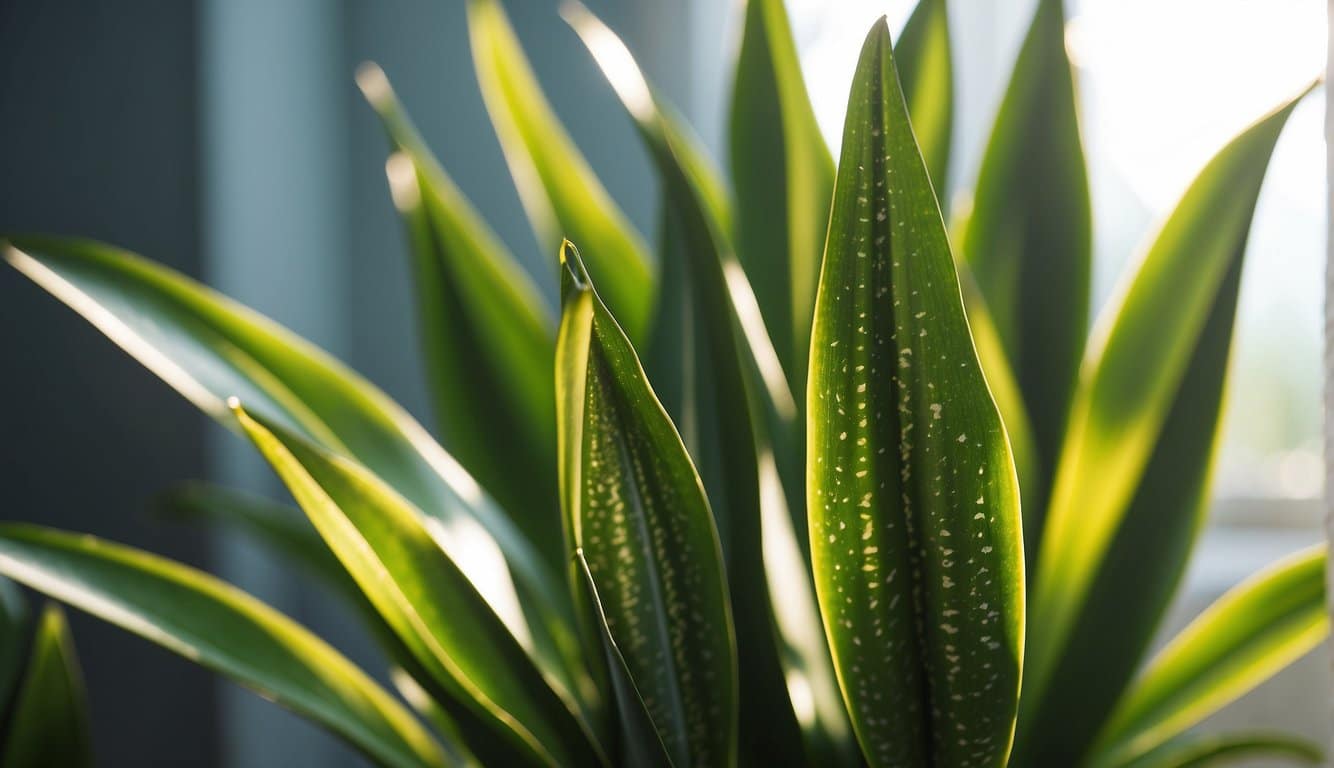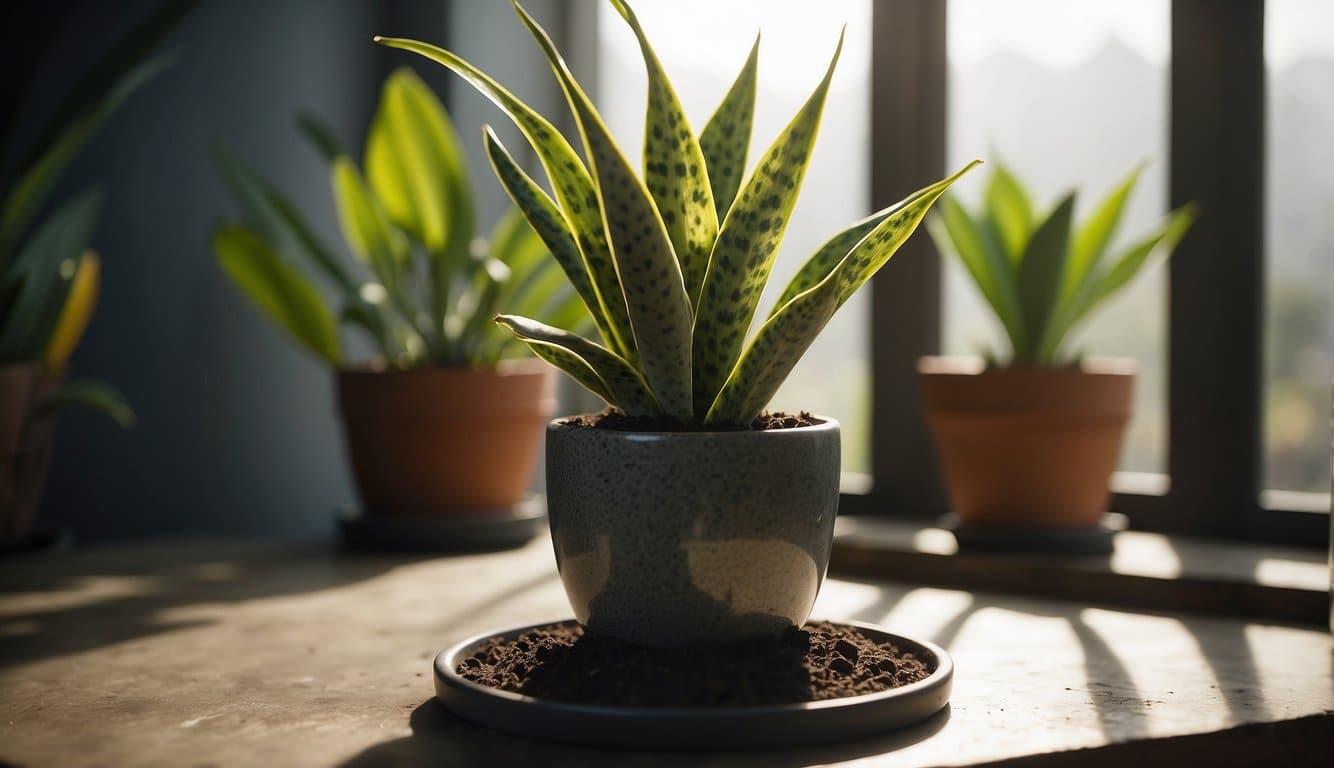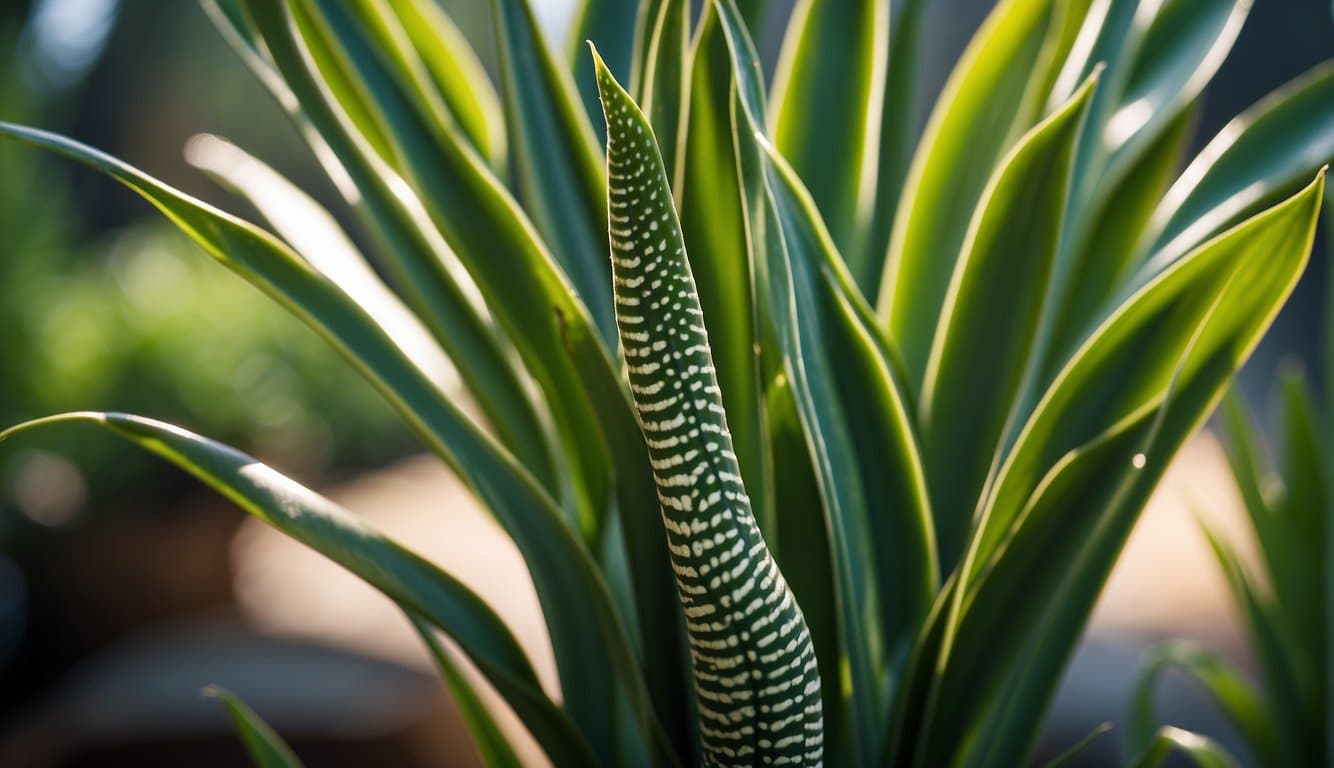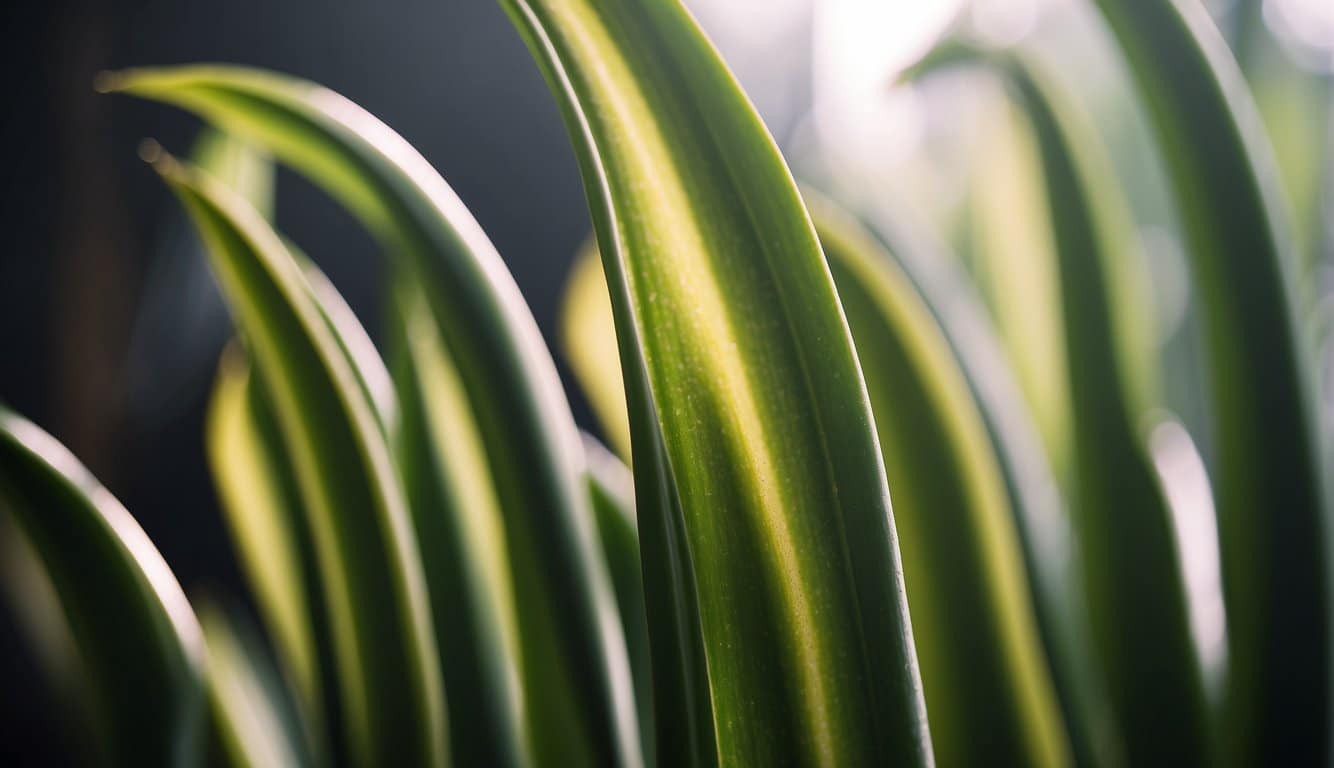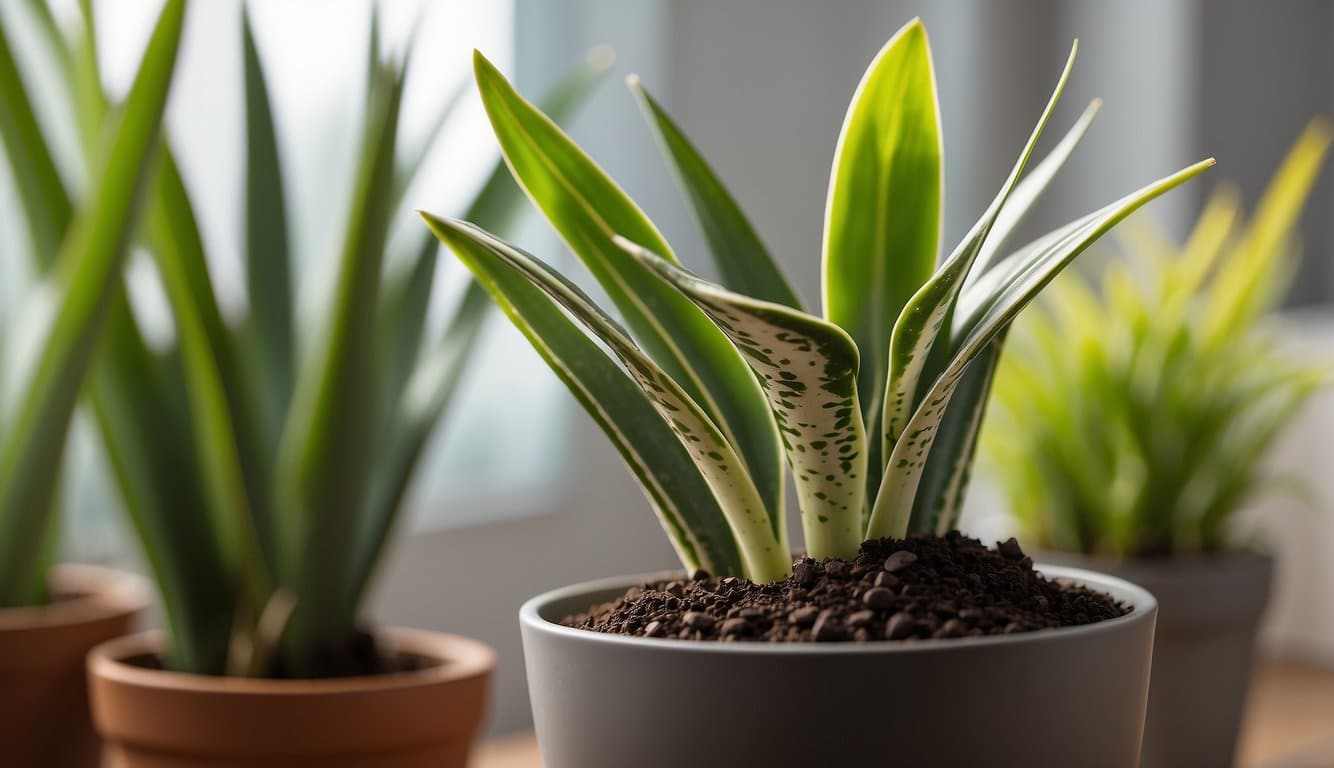When growing indoors, the snake plant (Sansevieria) is prized for its architectural form, low maintenance, and air-purifying qualities.
However, owners sometimes encounter a perplexing issue: snake plants that refuse to grow straight. Instead of reaching towards the sky with vertical elegance, some snake plants begin to lean, bend, or even droop.
While aesthetically troubling, this is often symptomatic of underlying care-related issues or environmental stressors that can be mitigated or corrected.
Understanding the factors impacting the upright growth of snake plants is essential for any enthusiast aiming to maintain their plant’s health and appearance.
Causes for this uncharacteristic growth pattern range from inadequate lighting to improper watering habits, each contributing to the plant’s suboptimal state.
With an emphasis on balancing care practices and environmental conditions, the snake plant can often be nursed back to its original, upright grandeur.
Key Takeaways
- Proper care and balance of environmental conditions are crucial for straight growth.
- Overwatering and inadequate lighting are common culprits of leaning.
- Regular inspection and maintenance can prevent and correct growth issues.
Factors Affecting Snake Plant Growth
To ensure an upright and healthy grow, snake plant caretakers must consider the key elements of light exposure, proper watering habits, and soil quality.
Light Exposure
Snake plants require a delicate balance in lighting conditions.
They thrive in indirect bright light.
Too much direct sunlight can lead to drooping leaves, while insufficient light may cause the plant to bend toward the light source.
- Ideal Conditions: Bright, filtered light
- Avoid: Direct, harsh sunlight
Watering Practices
Overwatering is one of the most common mistakes that can lead to a snake plant not growing straight.
These plants prefer dry soil conditions, which means excess water can cause root damage and weaken the plant’s structure.
- Watering Schedule: Allow the soil to dry completely between waterings
- Signs of Overwatering: Mushy, yellow leaves
Soil Quality
The right soil mix will support a snake plant’s growth and contribute to its overall strength.
A well-draining soil mixture ensures that water doesn’t accumulate, preventing root rot.
- Soil Mixture: Sandy or a well-aerated potting mix
- Drainage: Essential to prevent waterlogging
Correcting Growth Direction
To ensure a snake plant grows straight, one can employ staking for physical support or rotation methods to promote even light distribution.
These methods are particularly useful when a plant has developed a lean due to environmental factors.
Staking and Support
Staking is a reliable method for correcting the growth direction of a snake plant.
- Choose a stake that is tall enough to support the full height of the leaning leaves.
- Insert the stake into the soil close to the plant’s base, being careful to avoid damaging the roots.
- Gently tie the leaves to the stake with soft garden ties or old nylon stockings, ensuring not to constrict the leaves.
Rotation Methods
Rotating a snake plant can help correct and prevent leaning by ensuring all sides of the plant receive equal light. For effective rotation:
- Rotate the plant a quarter turn weekly.
- Place the plant in a location where it receives indirect light from all sides, if possible.
- If one-sided growth is noticed, rotate the plant to counter that lean gradually.
Common Issues with Snake Plants
When cultivating Snake Plants, gardeners are often enthusiastic about their hardiness.
Despite this resilience, they can fall prey to two specific types of problems that may hinder their upright growth: pest infestations and diseases.
These issues, if not addressed, can lead to a snake plant’s inability to grow straight and may affect the overall health of the plant.
Pest Infestations
Common Pests:
- Spider mites: These tiny, web-spinning pests can cause the leaves to discolor and drop.
- Mealybugs: They leave a cottony residue and suck the sap, weakening the plant.
- Scale insects: These pests appear as brown, bumpy spots on leaves and stems.
Prevention and Treatment:
- Isolation: Separate affected plants to prevent spreading.
- Physical removal: Use a cotton swab dipped in alcohol to dab on pests.
- Insecticidal soap or neem oil: Apply as per instructions to eliminate pests.
Diseases
Common Diseases:
- Root rot: Overwatering may cause the roots to rot, leading to a destabilized plant.
- Leaf spot: Fungal pathogens can lead to circular brown spots on foliage.
Prevention and Treatment:
- Proper watering: Ensure the soil is dry between waterings to prevent root rot.
- Good air circulation: It helps prevent fungal growth.
- Fungicide: For severe cases, the application of an appropriate fungicide may be necessary.
Maintenance and Care Tips
Proper maintenance and care are fundamental for a snake plant’s health, affecting its growth direction and structural integrity.
Timely pruning, appropriate fertilization, and regular repotting contribute greatly to keeping the plant straight and vigorous.
Pruning
Regular pruning keeps a snake plant tidy and may contribute to straight growth.
Dead or damaged leaves should be carefully removed with clean, sharp scissors. One should cut close to the soil level, avoiding damage to the healthy sections.
Fertilization
Snake plants benefit from balanced, controlled-release fertilizers during the growing season.
Feeding them once every 4-6 weeks with a standard houseplant fertilizer diluted to half strength helps maintain nutrient levels without over-fertilization, which can make them grow unevenly.
Repotting
A snake plant should be repotted every 2-3 years or when it becomes root bound.
Transplanting it into a slightly larger pot with fresh potting mix not only refreshes the nutrient content but also prevents the roots from crowding, which could cause the plant to lean or grow improperly.
Frequently Asked Questions
Problems with a snake plant not growing straight are commonly related to environmental factors and care habits. These FAQs address common concerns and provide solutions to encourage vertical growth.
How can I correct a leaning snake plant?
To correct a leaning snake plant, one can rotate the plant periodically to ensure even exposure to light, thus promoting more balanced growth.
If the leaning is due to heavy, tall leaves or uneven watering, adjusting watering practices and supporting the leaves may help.
What causes a snake plant to grow outwards instead of upwards?
Snake plants may grow outwards rather than upwards if they experience uneven light exposure, if they’re overwatered, or if they are too crowded in their current pot.
Ensuring consistent light, reducing watering, and providing adequate space can redirect growth upwards.
What should be done if a snake plant falls over at the base?
If a snake plant falls over at the base, it could indicate root rot from overwatering or a weak root system.
Inspecting the roots, removing any decayed sections, and repotting in fresh soil with proper drainage will improve its stability.
Is staking an effective method for straightening a snake plant?
Staking can be an effective temporary solution for straightening a snake plant, especially for taller, top-heavy leaves.
Utilize stakes and soft ties to gently guide the plant’s growth without damaging the leaves.
Can repotting a snake plant affect its growth direction?
Repotting a snake plant can positively affect its growth direction by providing fresh soil and more space for roots to expand.
Ensure the new pot has proper drainage and that the plant is situated upright during repotting to encourage vertical growth.
Is it advisable to trim snake plant leaves that are drooping or bending?
Trimming snake plant leaves that are drooping or bending can help the plant conserve energy and redirect it to healthier growth.
However, trimming should be done with clean tools and only when necessary to avoid stress to the plant.
